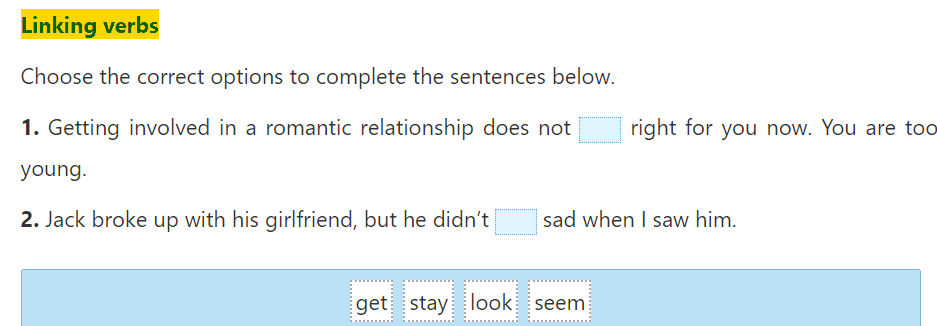Bài học cùng chủ đề
Báo cáo học liệu
Mua học liệu
Mua học liệu:
-
Số dư ví của bạn: 0 coin - 0 Xu
-
Nếu mua học liệu này bạn sẽ bị trừ: 2 coin\Xu
Để nhận Coin\Xu, bạn có thể:

Luyện tập SVIP
Lesson Objectives
 Proposing solutions to problems facing people with disabilities and writing an article.
Proposing solutions to problems facing people with disabilities and writing an article.

Read a student's article about a problem facing children with cognitive impairments, and the solutions she proposes. Put the phrases in the appropriate spaces (1-3).
In developing countries, there are many children with cognitive impairments. In addition to lack of medical care and economic hardships, these children face a lot of discrimination in life. They are treated less fairly because of their disabilities and many non-disabled people have negative attitudes towards them.
How can we solve this problem and help these children? First, (1) . They have different learning difficulties, but that does not mean that they cannot learn. For example, Einstein, the father of modern physics, could not read until he was eight, but that did not stop him from becoming one of the great scientists of our time. Understanding cognitive disabilities will change people's attitudes and make them support these children better.
Second, there should be more contacts between people with cognitive impairments and other non-disabled people. Study groups or group work can bring them together and will help to build their self-esteem. When working together, (2) . This will also unite people from different backgrounds under a common goal and strengthen our community.
(3) and are offered fewer opportunities in life. However, they are part of our society and should be integrated in our communities. Better understanding of cognitive impairments and more contacts between non-disabled and disabled people will change attitudes and reduce discrimination in life.
(Kéo thả hoặc click vào để điền)
In developing countries, there are many children with cognitive impairments. In addition to lack of medical care and economic hardships, these children face a lot of discrimination in life. They are treated less fairly because of their disabilities and many non-disabled people have negative attitudes towards them.
How can we solve this problem and help these children? First, people should learn more about children with cognitive impairment. They have different learning difficulties, but that does not mean that they cannot learn. For example, Einstein, the father of modern physics, could not read until he was eight, but that did not stop him from becoming one of the great scientists of our time. Understanding cognitive disabilities will change people's attitudes and make them support these children better.
Second, there should be more contacts between people with cognitive impairments and other non-disabled people. Study groups or group work can bring them together and will help to build their self-esteem. When working together, we will recognise each other's limitations and discover hidden talents. This will also unite people from different backgrounds under a common goal and strengthen our community.
Children with disabilities are still treated unfairly and are offered fewer opportunities in life. However, they are part of our society and should be integrated in our communities. Better understanding of cognitive impairments and more contacts between non-disabled and disabled people will change attitudes and reduce discrimination in life.

Read the article again and complete the following outline.
|
Introduction State the problem (supported with facts and examples to show why this is a problem) |
|
|
Main body Solution 1 (supported with examples and reasons) Solution 2 (supported with examples and reasons) |
|
|
Conclusion State the problem again and summarise the two solutions |
(Kéo thả hoặc click vào để điền)
| Introduction State the problem (supported with facts and examples to show why this is a problem) | Children with cognitive impairments often face discrimination in life. |
| Main body Solution 1 (supported with examples and reasons) Solution 2 (supported with examples and reasons) | People should learn more about children with cognitive impairments. There should be more contacts between people with cognitive impairments and non-disabled people. |
| Conclusion State the problem again and summarise the two solutions | Better understanding and better cooperation between the two groups of people will change attitudes and reduce discrimination. |
Choose one of the following problems and write an article of 160-180 words, using the sample outline. You can use the suggestions below.
| Problem | Solution |
|
Many students with visual impairments in regular schools; cannot fully participate in school activities; often left behind |
- Specialised materials and tools such as Braille or large print books, and talking computers; materials with large print - Become part of study group; create atmosphere of friendliness, respect and acceptance during all activities |
|
No pedestrian facilities for people with visual impairments in my neighbourhood |
- Traffic light with audible 'beeping' signals - Different type of ground surfaces to indicate where the road starts |

Bạn có thể đăng câu hỏi về bài học này ở đây
